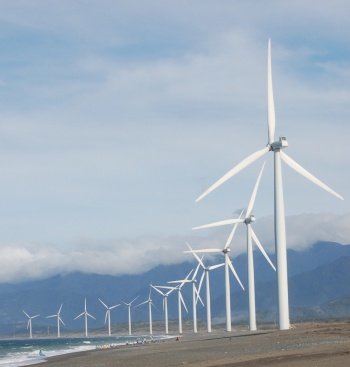 Photo by Douglas Cataylo
Photo by Douglas Cataylo
Wind energy is regarded as an increasingly important player in the region. New investments, job creation, and (most importantly) the delivery of clean energy are seen as benefits that British Columbia (BC) will enjoy from future energy plans. Investments in renewable and low-impact electricity systems are supported by the Clean Energy Act. The Act shows that the province is serious about its plans to invest in the most rapidly growing source of new electricity around the world: wind energy.
Wind energy, for which six projects are currently contracted through BC Hydro’s 2010 competitive call for clean power (totalling 534 MW of capacity), continues to expand. It is to install 690 MW worth of new wind energy capacity across Canada in 2010, bringing $1.7 billion in new investments. More than 1,000 MW worth of wind power infrastructure is likely to be installed in 2011, which would make 2011 a record year for the development of wind energy. It would also create about $2.75 billion in private sector investment, 1,000 jobs, and enough clean electricity to power more than 300,000 homes. It should also generate more than $3 million per year in lease payments to farmers and other land owners, and more than $3 million per year in new tax revenues for municipalities.
As the government tries both to meet the rising energy demand and to reduce the environmental impacts of energy generation, it seems to be turning to wind-generated electricity as a solution. The wind energy supply is ten times what it was six years ago. Canada’s total wind energy capacity is now 4,008 MW — high enough to supply more than 1.2 million homes.
Provinces are initiating policies to try to stabilize the industry’s growth, believing that taking such actions will, through the economy of scale, reduce the infrastructure and operations costs of this new technology over time. An example of such a policy is the new Feed-in Tariff (FiT) program under the Green Energy and Economy Act which was introduced in Ontario in 2009. The FiT program is the first of its kind in North America. Another example is Nova Scotia’s 2010 energy policy. It introduced a target to meet 25 per cent of electricity needs in the province by renewable energies by 2015. Interestingly, this goal is mandatory, and so is a plan to boost renewable energies by up to 40 per cent.
Canada has only just started to channel its vast potential in the wind energy industry over last few years, but its future looks very promising. Wind energy in Canada promises to result in economic benefits. Incorporating the costs of environmental impacts from all sources of electricity generation is one of the crucial conditions to achieve these benefits. Policymakers are charged with the task of making Canada an internationally competitive investment candidate by establishing long-term targets and stable policies supporting wind energy.
